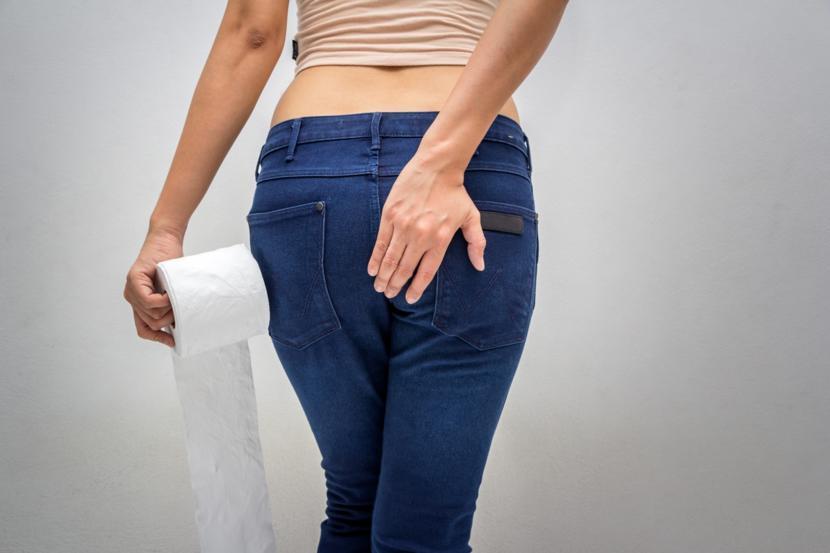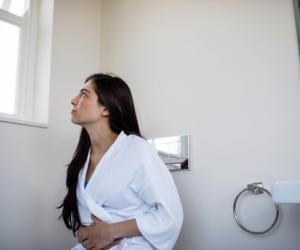Everything You Need to Know About Anal Fissures

An anal fissure is a linear tear in the skin of the distal anal canal below the dentate line. Millions of people suffer from painful bowel movements due to anal fissures.
This condition is commonly experienced by young people, but it can also be found in grown men and women. The most common symptom is anal pain during or after a bowel movement. Another symptom is rectal bleeding, which is usually bright red in color. Bleeding due to an anal fissure does not usually come out in large amounts. Therefore, any blood from the area may be from other sources such as hemorrhoids, as both go hand in hand. Pruritus ani or commonly known as anal itching can also accompany anal fissures. The symptoms can cause discomfort and can negatively impact the quality of people's lives.
During a physical examination, the fissure may be visible in the anal canal as a pear-shaped split, if the buttocks are parted. However, its view can sometimes be blocked by marked spasms of the anal canal. The diagnosis of anal fissures is often made possible by clinical evidence of the anal spasms and pain combined with proctoscopy or digital rectal examination.
A visible anal fissure will have a granulation tissue on its base that has highly demarcated fresh mucosal edges. There will be a noticeable lack of granulation tissue and induration of the margins of the anal fissure if chronicity is increased. A number of characteristics will be noticeable in the case of anal fissures. They include:
- Presence of horizontal fibers of the internal sphincter muscle at the base of the mucosal defect
- Changes of sentinel skin tag
- Presence of an anal stenosis
Anal Fissure Facts
- Anal fissures are identified by visual examination of both the anus and anal canal.
- The primary symptom of an anal fissure is pain following bowel movements. Aside from a painful defecation, malodorous discharge, anal itching, and bleeding are other symptoms of anal fissures.
- Basically, anal fissures are tears in both the anus and anal canal, which may be chronic or acute.
- The main cause of anal fissures is trauma. However, if fissures are present in rare locations, they should be detected since various non-traumatic diseases are related to anal fissures.
There are home remedies and over-the-counter products that can be used to treat anal fissures. Some home remedies include:
- Having a sitz bath
- Changing your diet to foods that have high fiber content to soften the stool
- Drinking an adequate amount of fluids
If home remedies fail to work, prescription drugs may be used. They include:
- Calcium channel blockers
- Nitroglycerin
- Ointments that contain anesthetics
- Steroids
The most reliable treatment for anal fissures is a surgical procedure known as lateral internal sphincterotomy. However, surgery only becomes an option if non-surgical treatments are ineffective.
Causes of Anal Fissure
Anal fissures are mainly caused by trauma in the lining of the anus. Unfortunately, patients with a tight and increased muscle tone have a higher risk of getting anal fissures. The primary cause of anal fissures is passing hard and dry stools. However, chronic diarrhea can also cause anal fissures.
- Constipation - It is a result of straining in the bathroom due to a hard stool. Constipation usually causes too much pressure on the anal canal leading to tears. It can be solved by taking plenty of fluids to help soften the stool. Taking an over-the-counter stool softener is another way of dealing with constipation. It is mostly advised to mothers who just gave birth.
- Diarrhea - Diarrhea can create stress in the body, which puts individuals at an increased risk of developing anal fissures. This condition mostly happens to people who frequently travel and end up changing their diets. Changing your diet puts the digestive system to the test.
After childbirth, women may also develop anal fissures due to pushing and straining during delivery. The increased pressure that is put on the muscles can also lead to tearing of the lining of the anus. Inflammatory bowel disease and other anal infections are other known causes of anal fissures.
Symptoms
- Severe Pain - This symptom is usually experienced during and after bowel movements. Pain usually takes a few minutes, but may further extend to hours.
- Bleeding - After straining in your bowel movement, bright red blood might be seen in your stool.
Surgery for Anal Fissures
For outpatients, surgery involves a Botox injection into the anal sphincter and the separation of some parts of the internal anal sphincter. The main goal of surgery is to relieve pain in the anal muscles. Thus, doing away with the anal spasm and letting the fissure to heal.
Injecting Botox is about 50 to 80 percent effective, while sphincterotomy is more effective at 90 percent in most cases. Regardless of how successful the surgery is, these procedures also come with risks. You should discuss with your surgeon about the risks along with the required treatment of your condition.
Treatment
Surgery is not usually necessary in most cases of anal fissures. Including a lot of fiber in your diet and increasing your water intake can be effective ways of getting rid of anal fissures. Having warm baths that can last for about 10 to 20 minutes can be good in soothing and relaxing the anal muscles. You can also use topical anesthesia to ease the pain.
Other medications such as nifedipine gels, nitroglycerin ointments, and diltiazem creams can also be effective in relaxing the anal sphincters. However, surgical treatment may be required in the case of chronic anal fissures.
Anal Surgical Stretch
Anal fissures can also be treated with a surgical method that involves stretching and tearing of the anal sphincters. Even though anal stretching has turned out to be effective in alleviating pain, in most cases, it involves uncontrolled and traumatic disruption of the anal sphincter.
Sometimes, the trauma in the anal sphincter extends beyond the desired area, which often leads to fecal incontinence. It has also worked in only 72 percent of anal fissure cases. For this reason, it has fallen out of favor.
How long is the recovery process?
It can take up to 6 to 10 weeks for a person to completely recover from surgery. However, it only takes a few days for the pain to go away. In most cases, patients can go on with their daily activities in just a few days after their surgery.













